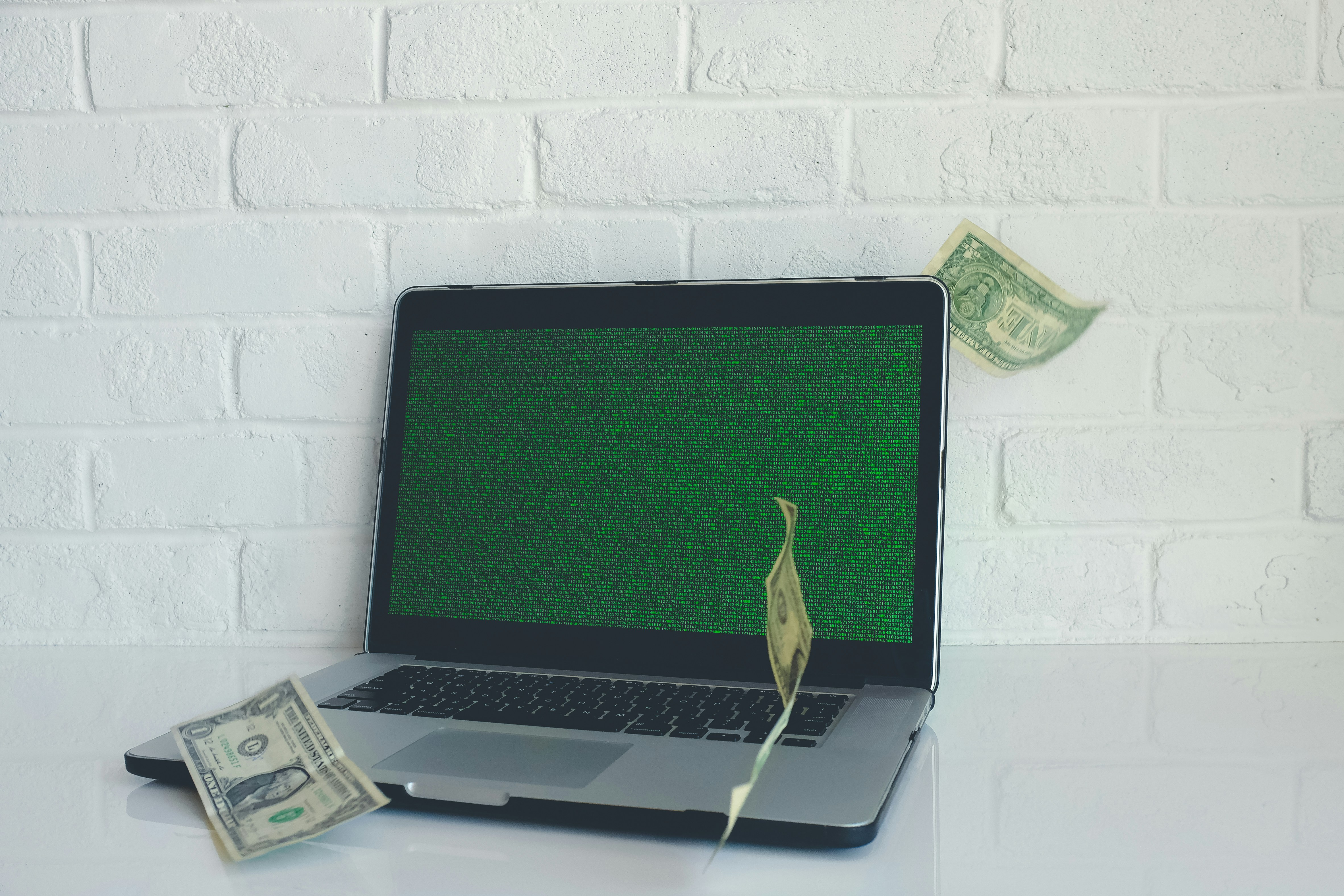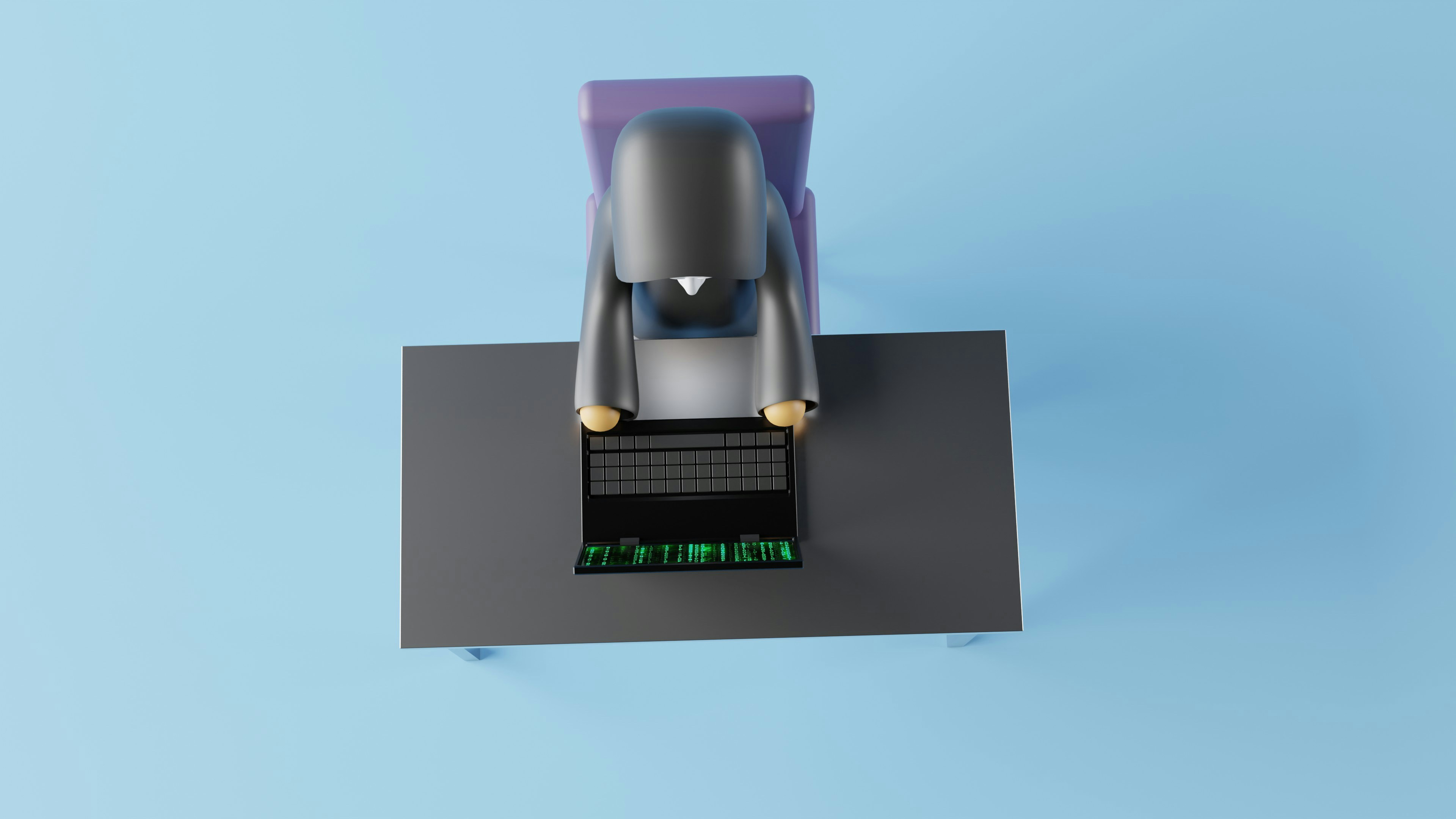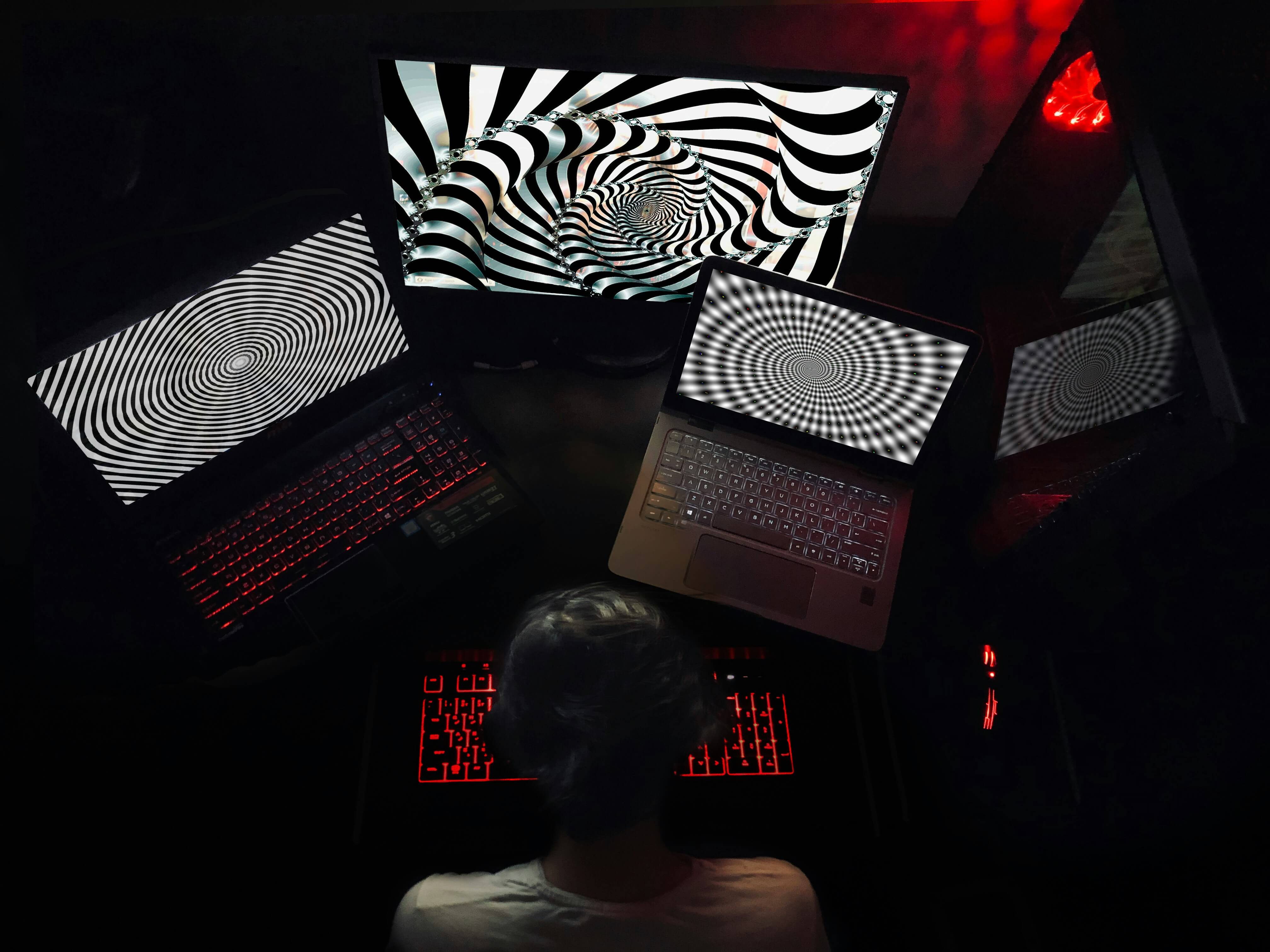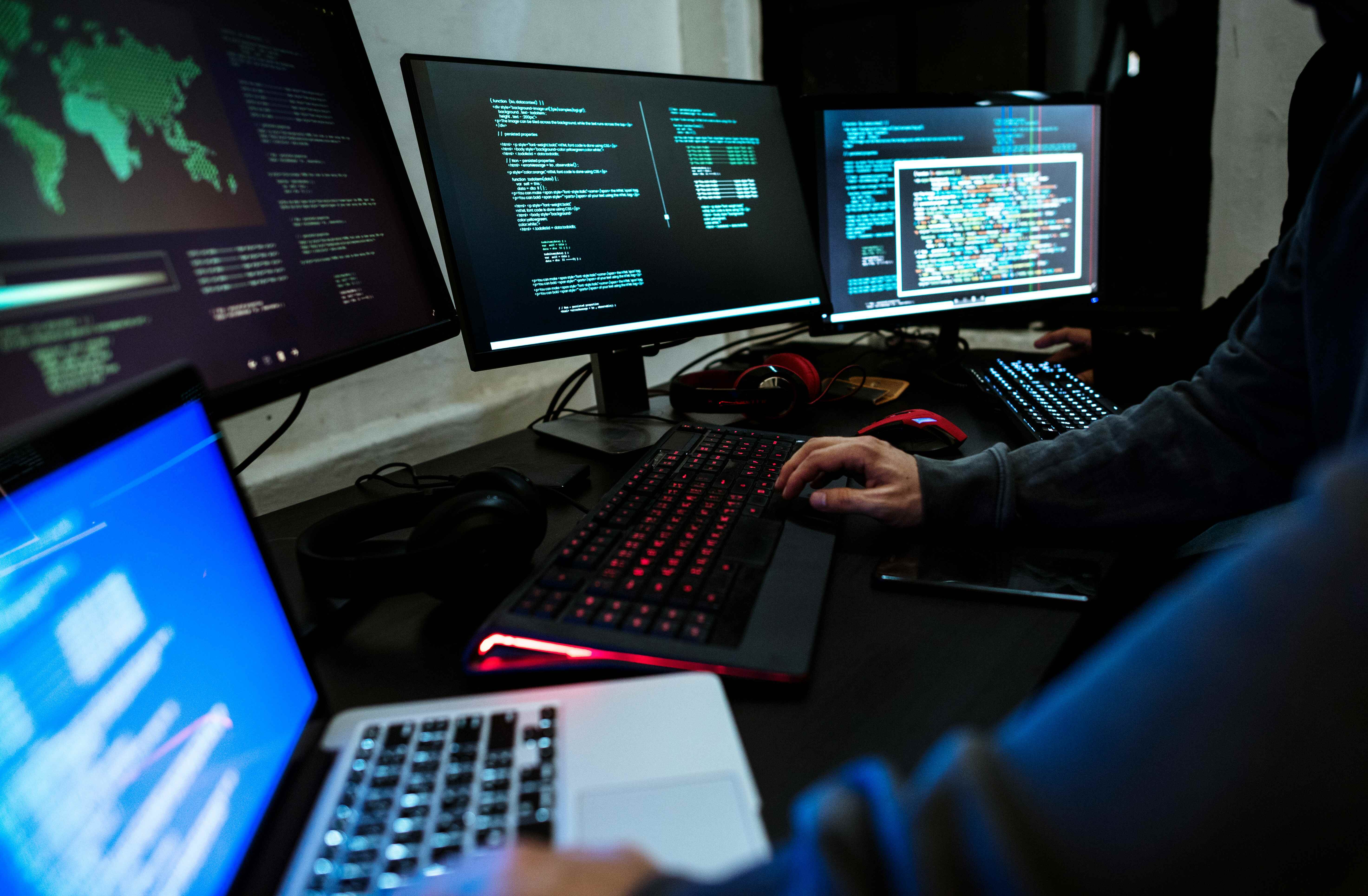Article
How Deepfakes are Impacting Business Security: What You Can do
30 Sept, 202414 mins
Technology, as we know, is changing, and while most businesses are ramping up their cybersecurity strategies to deal with current threats, the nature of attacks is becoming more innovative. Deepfake technology—fake videos, images, or deepfake audio created using AI—is one of those threats you might not expect to impact your business. But deepfakes impersonating real people pose a more significant security risk than most realize. The good news? You can get ahead of the curve with this new cyber threat.
In this guide, we’ll break down what deepfakes are, how they work, and why you should care. We’ll also give you practical tips on how to protect your business—whether it's through stricter verification, investing in business security systems, or simply educating your team on what is deepfake technology. Ready to stay ahead of the game?
We will discuss:
- What Actually are Deepfakes?
- What Does US Law Say About Deepfakes
- Preventing the Increasing Threat of DeepFake-Powered Attacks
- Final Thoughts on Deepfakes and Business Security
What Actually are Deepfakes?
Deepfakes are fake images, videos, or audio recordings created using AI. This technology, known as deep learning, is designed to make convincing representations of fake events.
Although the term “deepfake” only emerged around 2017, the roots trace back to the early 1990s with CGI advancements. By 2017-2018, Reddit users were already using AI algorithms to swap celebrities' faces onto adult videos without consent. The trend quickly caught on, with some of the highest searches involving deepfaked versions of celebrities.
In 2018, a viral video featuring a "deepfake Obama" demonstrated how fake news could spread quickly. While nearly three-quarters (73%) of US respondents believe AI and ML enhance cybersecurity, a surprising 71% of global respondents admitted they don't know what a deepfake is.
Social media is now flooded with deepfakes, ranging from harmless historical videos to more dubious uses. What started as a novelty or joke has evolved into a tool for fraud and misinformation. The real risk isn’t just in the technology but in people’s tendency to trust what they see.
Deepfakes needn’t be perfect to cause damage; they only need to be convincing enough to spread misinformation.
Deepfake technology has grown beyond simple pranks. It’s now used for everything from political manipulation and financial scams to identity theft and threatening business security through impersonation.
Here’s a closer look:
- Political Manipulation: Deepfakes can create convincing fake news, sway public opinion, or disrupt elections.
- Financial Scams: AI can forge documents or mimic voices, leading to fraudulent transactions and economic losses.
- Identity Theft: Creating fake IDs or impersonating individuals can lead to identity theft and fraud.
- Celebrity Deepfakes: Often used in adult entertainment or for creating misleading content involving celebrities.
- Corporate Training and Historical Recreation: While there are positive uses, like training simulations and historical recreations, the risks of misuse are substantial.
Understanding what deepfakes are and how they function is crucial for protecting your business and personal security.
Cybersecurity Deepfake Risks for Businesses in 2024 and Beyond
Deepfake technology has moved from being a tech curiosity to a serious business threat. Advanced tools make it easier to create realistic fakes, and companies are facing new challenges. Manipulated images, videos, and audio can cause real harm, from financial losses to reputational damage.
Let’s look at how deepfakes can impact businesses:
- Fraudulent Communications - Deepfakes can generate believable fake emails or phone calls, tricking employees into sharing sensitive information or authorizing transactions. The result? Unauthorized access and potential financial loss.
- Identity Threats - With deep fake technology, creating fake social media profiles or forged ID documents has become alarmingly simple. This can lead to impersonation and fraudulent activities that threaten personal and business reputations, bringing serious legal and financial risks.
- Reputation Damage - The ability of deepfakes to spread false information about your business or its leaders can have disastrous effects. False videos or audio clips can tarnish your company’s reputation, and dealing with the fallout can be both time-consuming and costly.
- Social Engineering Attacks - Deepfake technology enhances social engineering tactics by making fake messages from trusted sources more convincing. Employees might be deceived into providing sensitive information or taking actions they otherwise wouldn’t, leading to significant security breaches.
- Cyber Extortion - In the world of cyber extortion, deepfakes are used to create fake compromising content of key personnel. Attackers use this to demand ransoms, knowing that the threat of reputational damage might coerce companies into compliance.
Significant Cyber Risks from Deepfakes for Your Business
As we’ve discussed, deepfakes can lead to real trouble for businesses. Here’s how these manipulative technologies can hit your operations hard:
- Major Money Drains: Deepfakes can trick your team into sending cash or leaking sensitive information. This costly mistake can hurt your bottom line. Strong business security systems are essential to avoid these pitfalls.
- Reputation Wreckers: A deepfake video featuring your CEO making false statements can damage your brand's reputation. Understanding how deepfake technology works can help you guard against these threats.
- Customer Data Leaks: Phishing attacks using deepfake audio or video can expose login details and other personal information. Learn how to protect your business by knowing how to detect deepfakes.
- Trust Issues: Deepfakes can make investors and clients question your security. If they see a deepfake related to your business, it could erode their trust.
- Legal Nightmares: Fake evidence from deepfakes could lead to lawsuits or compliance problems. Be prepared for potential legal battles and effectively manage your business’s legal risks.
To illustrate these risks, let’s look at examples of how quickly deepfakes can cause issues for businesses across different sectors- we guarantee one could happen to you:
Financial Firm Fraud
Imagine you’re running a financial services company. One day, your CFO gets a video call from the "CEO" asking for an urgent wire transfer to a partner. It looks legit, so they authorize it—only to find out later that it was a deepfake, and the money’s gone. All of it.
Retail Reputation Ruin
You own a popular retail brand. Suddenly, a video of your founder surfaces online, making offensive remarks. It spreads fast, and customers start boycotting your stores. The problem? It’s a deepfake, but your reputation's already in the gutter by the time you can prove it.
Data Breach Disaster
Your tech company prides itself on keeping data secure- that’s one of the key principles of your business. Then, a deepfake phishing email shows up, supposedly from IT, asking employees to reset their passwords. A few people fall for it, and now sensitive customer info is in the hands of hackers. Just like that, the reputation that you have spent years building is facing backlash.
Legal Liability Trap
You run a mid-sized marketing agency that requires a strong reputation to keep clients on your side. A deepfake video appears online showing your "CEO" making a controversial statement about a client. The client, believing it’s real, threatens legal action and publicly criticizes your company. Even though you can prove it’s a fake, you’re left dealing with a PR nightmare and strained client relations.

What Does US Law Say About DeepFakes?
Deepfakes aren't directly covered by federal law, but various legal avenues can still be relevant depending on their use. States have begun to step up with their own regulations. For example, California passed laws in 2019 to tackle deepfakes used to interfere with elections and to address non-consensual pornography involving deepfakes. Texas also joined the fight, criminalizing deepfakes intended to harm individuals during elections.
While there's no specific deepfake law at the federal level, existing statutes may apply. Deepfakes that damage reputations could lead to defamation suits. They might fall under fraud laws if used to deceive for financial gain.
Additionally, deepfakes that infringe on copyrighted content or mislead voters could face legal trouble. Recent legislation like the SHIELD Act (2019) and the National Defense Authorization Act (2021) show a growing concern about deepfakes, especially regarding election interference and national security.
There's talk of introducing new federal regulations to address deepfakes specifically. For now, issues like defamation, copyright infringement, and intellectual property theft are where the law might come into play for businesses looking to fight against the use of this AI technology overall.
Preventing the Increasing Threat of DeepFake-Powered Attacks
Every day, technology continues to amaze us with all it can do. From how well it helps our businesses streamline customer interaction to its role in the safety of our data and business security. However, it’s important to remember that technology, in the hands of humankind, isn’t always used as intended.
Deepfake technology is a prime example. Whether it's being used to impersonate your internal team, target customers, or create synthetic corporate personas that look, sound, and act like your boss—minus the swearing—attackers have found new ways to manipulate and deceive. The stakes are higher than ever, and the risks are no longer hypothetical.
So, how can you defend your business against something that feels straight out of a sci-fi film? There are steps you can take to strengthen your business security. From educating your employees to using detection tools, working through each to ensure you're protected is important. Let’s worth through them together.
Implement Strong Cybersecurity Measures Overall
Deepfakes aren’t just for social media fun—they’re a growing threat to businesses. And while we can joke about how convincing they can be, protecting your company from them is no laughing matter. These technologies are evolving fast. Your cybersecurity strategy needs to stay one step ahead if you want to maintain strong business security.
In 2022, two out of three cybersecurity professionals reported seeing malicious deepfakes used in attacks on businesses. That’s a 13% increase from the previous year. And guess what? Email was the most common delivery method. It’s clear that the risks are growing, and so must your defenses.
6 Key Areas to Strengthen Your Cybersecurity
To protect your business from the risks deepfakes pose, you’ll want to focus on these areas:
- Who has access to sensitive data? Only give access to those who absolutely need it. Don’t let unnecessary access become a vulnerability.
- Do your teams even know what deepfake technology is? Training your staff is essential to help them recognize deepfake examples and know how to detect deepfakes.
- Are third-party vendors secure? It’s not just about your internal systems—ensure your partners' business security systems are robust.
- Are you backing up critical data? This is especially important for small business security. Regular, secure backups are key to protecting what matters.
- Can your employees spot a deepfake audio clip or a fake email? Educate them to help prevent identity theft or fraud.
- Is there a clear process for reporting suspicious activity? If something doesn’t seem right, your team should know how to report it quickly and easily.
Cybersecurity Steps to Stay Ahead of Deepfakes
Passwords aren’t enough anymore. You need stronger layers of protection such as:
- Multi-factor authentication (MFA) is a must, especially as deepfake technology advances.
- Combining biometrics, key codes, and traditional passwords makes access more secure.
- Behavioural biometrics can help too, tracking user patterns to flag anything unusual. Think of it like your bank checking in before a suspicious transaction—better safe than sorry.
By adopting stronger cybersecurity measures, you can protect your business from the rising threat of deepfakes and keep your systems secure.

Educate Employees about Deepfakes - More than once
When it comes to deepfakes, ignorance isn’t bliss. As deepfake technology becomes more sophisticated, the risk of impersonation grows, and your business security could be at serious risk. Educating your team about these threats is no longer optional—it’s essential for safeguarding your business security systems.
So, what’s the impact if deepfakes infiltrate your company? The fallout could be massive. Missed signals can lead to phishing attacks, identity theft, or compromised sensitive data. Deepfakes aren’t just used in celeb deepfakes; they're now a tool for cybercriminals targeting businesses. The technology is evolving fast; if your training doesn’t keep up, you’re leaving the door open.
Here’s where your team could be vulnerable:
- Lack of Understanding: Do they know what deepfakes are? Employees must understand the threat deepfakes pose to business security systems.
- Phishing Susceptibility: Regular phishing training isn’t enough. With deepfake audio and video, attackers can impersonate anyone, making these attacks harder to detect.
- Social Media Exposure: Public social media profiles can be goldmines for social engineering. Employees need to know how this information can be used against them.
- Lack of Awareness: Can your team spot social engineering? Deepfakes can impersonate colleagues, so employees must be trained to verify unusual requests.
Provide ongoing training with practical deepfake examples to help employees recognize these threats. Workshops, followed by random testing, can reinforce their ability to spot and respond to potential deepfake attacks. Focus on employees who may be more vulnerable, such as those less tech-minded.
Cybersecurity measures aren't one-off—consistent education is essential as deepfake technology continues to evolve. Keeping your team informed is important for business security.
Use Deepfake detection tools
Spotting deepfakes can be tricky, especially with technology that's constantly advancing. While training your team to recognize these threats is essential, having the right detection tools in place can provide an added layer of protection. Think of these tools as your first line of defense, catching potential deepfake attacks before they can cause harm.
Detection tools are designed to spot various signs of manipulation. They can identify foreign or defective elements in images and videos, such as unusual features or distortions. These tools also detect compression artifacts that may suggest tampering and analyze texture inconsistencies to flag synthetic content.
Detection Tools Can Help by:
- Spotting Anomalies: Look for out-of-place features or oddities that signal manipulation.
- Detecting Compression Artifacts: Identify signs that an image has been altered or compressed.
- Analysing Image Texture: Find texture inconsistencies that could indicate a deepfake.
- Recognising Synthetic Generation: Use algorithms to detect signs of artificial creation.
Some key deepfake detection tools that are developing include:
- Sensity: Known for its advanced detection capabilities.
- Deepware: Provides real-time analysis of synthetic media.
- Reality Defender: Offers comprehensive solutions for identifying deepfake content.
Although these tools are still developing and might not catch every threat, they play a vital role in a strong cybersecurity strategy. Pairing them with ongoing employee training will enhance your overall business security and help you stay ahead of potential deepfake attacks.
Understand How to Spot Deepfake Attacks Yourself
Training employees on how to spot deepfakes is crucial, but understanding these threats yourself is equally important. Over 10% of companies have encountered deepfake fraud. If you, your senior management, or anyone handling sensitive data don’t know how to identify deepfake attacks, how can you expect others to?
Here’s how you can spot deepfake attacks and boost your business security:
- Unusual Requests: If you receive a video or audio clip from someone who doesn’t usually send such content, it’s a red flag. Always verify the sender’s identity to protect your business security systems.
- Unnatural Movements: Look for unnatural facial movements or blinking patterns. AI still struggles with human-like blinking, making this a key indicator of deepfake technology.
- Background Anomalies: Check for oddities in the video background, like distorted facial features or extra limbs. AI often fails to handle background consistency, which can be a sign of a deepfake.
- Speech Patterns: Compare the video’s speech patterns with what you’re accustomed to. If a normally fast-talking CEO suddenly speaks slowly and robotically, it might be a deepfake.
Understanding deepfakes and how to detect them is essential for safeguarding your business. Regular updates and training on deepfake examples and cybersecurity measures will help you stay ahead of these threats. Make sure your business is equipped to handle advanced deepfake technology and prevent identity theft vs fraud scenarios.
By staying informed about deepfake technology and its potential impact, you can better protect your business from these developing threats. As yourself, is your business actually prepared to encounter deepfakes?
Final Thoughts on Deepfakes and Business Security
Deepfakes are becoming a serious concern for businesses. Their ability to create fake but convincing content leads to real-world problems like fraud, identity theft, and reputational damage. As these technologies become more accessible, it's crucial to stay ahead of the curve.
To protect your business, focus on a few key areas. Invest in the right detection tools and put strong verification processes in place. Educate your team about the risks—when everyone knows what to look out for, it’s harder for deepfakes to slip through the cracks. Regularly review your cybersecurity measures and have a plan ready to handle any crises.
In a world where deepfakes are increasingly common, these proactive steps will help guard against their potential impact. By staying informed and prepared, you can better protect your business and maintain the trust of your clients and partners.
Ready to Strengthen Your Business Security?
At McGregor Boyall, we understand that business security is more than just a plan—it's about having the right people in place. Our recruitment expertise spans cybersecurity, financial services, the public sector, and pharmaceutical industries, ensuring we find candidates who truly fit your needs. We simplify the hiring process so you can focus on strengthening your internal security measures.
Get in touch with us today to discover how we can support your business security goals.



